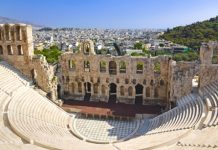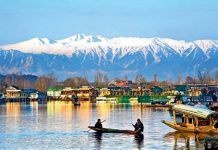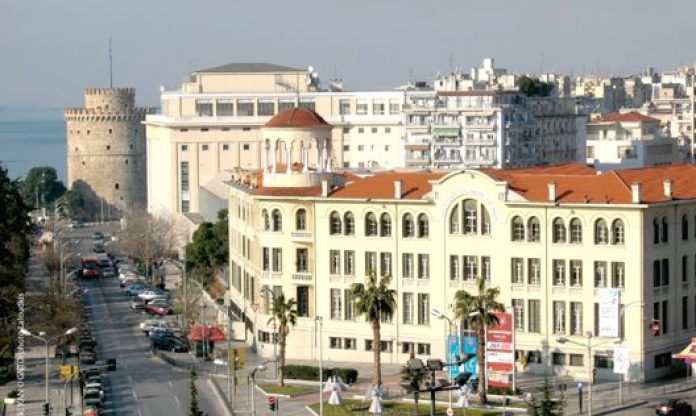
The cutting-edge art performances, cinematic avant-garde, cultural sites, creative projects, arts and entertainment hubs all-in-one, numerous monuments, fifteen listed UNESCO World Heritage sites and the 5 km meandering waterfront make Thessaloniki a must-see destination.
Thessaloniki is the second largest city of Greece (officially the Hellenic Republic and known since ancient times as Hellas, is a country in Southern Europe).and the most important centre of the area. Built near the sea, it is a modern metropolis bearing the marks of its stormy history and its cosmopolitan character, which give it a special beauty and charm. Due to its privileged location of land-proximity to both Europe and the East, travelling to Thessaloniki has always been a no-brainer.
Historically one of Europe’s oldest and most multiethnic cities, widely considered as the cultural capital of Greece, Thessaloniki is truly unique in the sense that it intricately marries its thousands-year-old multicultural heritage and the architectural marvels with the Roman, Byzantine, Ottoman and Sephardic Jew history.
Museums & Monuments
Archaeological Museum of Thessaloniki is considered one of the country’s most important museums. Museum collection includes findings from the area of Thessaloniki and the wider northern Greece. The eight permanent exhibition units, structured thematically, represent all aspects of private and public life in antiquity. The Museum of Photography is the only state-run museum dedicated solely to photography, aiming to approach all different usages of the photographic medium. Its activities are realised on a local, national and international level. Its collections and its archives include more than 100,000 photographic objects. TheMuseum organises the international photography festival of PhotoBiennale.
Thessaloniki Olymp ic Museum, unique in Greece, was founded in 1998, initially as Sports Museum. In its permanent exhibition, the museum presents the history of the modern Olympic Games, while, in the meantime, it organises various thematic temporary exhibitions. The Railway Museum of Thessaloniki has been in operation since 2OO1, located at the military station’s building, built in 1891 by the Italian architect, Pierro Arrigoni. It hosts numerous and rare railway exhibits such as original vehicles, restaurant and sleep wagon from the orient express, locomotives, wagons, uniforms, telegraphs, tools and archival material.
ic Museum, unique in Greece, was founded in 1998, initially as Sports Museum. In its permanent exhibition, the museum presents the history of the modern Olympic Games, while, in the meantime, it organises various thematic temporary exhibitions. The Railway Museum of Thessaloniki has been in operation since 2OO1, located at the military station’s building, built in 1891 by the Italian architect, Pierro Arrigoni. It hosts numerous and rare railway exhibits such as original vehicles, restaurant and sleep wagon from the orient express, locomotives, wagons, uniforms, telegraphs, tools and archival material.
The historical profile of Thessaloniki, which began in the Hellenistic era and has continued uninterrupted to the present day, is mainly linked to its Byzantine life. The walled city and its monuments can reasonably be called an open Byzantine Museum. All city monuments, Byzantine, Post-Byzantine and Ottoman have been declared as historical landmark monuments. Fifteen (15) of the Early Christian-Byzantine monuments were included in the UNESCO World Heritage Listing 1988.
Blue Flag Beaches
In the summer combine your stay in Thessaloniki with a cooling bath at the nearby beaches, in Perea, Neoi Epivatoes, Agia Triada, Nea Michaniona and Epanomi, all located on Thermaic Gulf, and Asprovalta, Vrasna a nd Stavros at the other end of the Thessaloniki Regional Authority, on the Strymonian Gulf, where you will find crystal clear sea, beaches where you can also enjoy your favorite summer sports and activities.
nd Stavros at the other end of the Thessaloniki Regional Authority, on the Strymonian Gulf, where you will find crystal clear sea, beaches where you can also enjoy your favorite summer sports and activities.
-
The ‘Blue Flag’ is an international quality sign, perhaps the most known environmental sign in the world and it is awarded to those beaches and marinas which fulfill all 29 of its criteria.











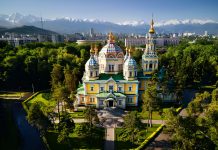






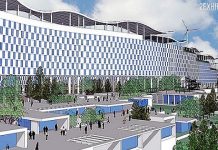











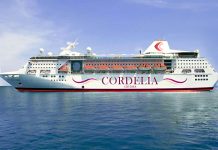




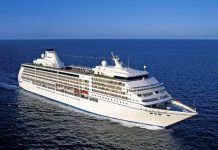

 Balkans. In the market of Thessaloniki, with its key road axes being Tsimiski St., Mitropoleos St., Proxenou Koromila St., P.P. Germanos St., Agias Sofias St., Ermou and Egnatia a visitor can fist shops stocked with domestic and imported brands and the hippest and most in vog
Balkans. In the market of Thessaloniki, with its key road axes being Tsimiski St., Mitropoleos St., Proxenou Koromila St., P.P. Germanos St., Agias Sofias St., Ermou and Egnatia a visitor can fist shops stocked with domestic and imported brands and the hippest and most in vog o the bursting point — and more open every year. For some of the liveliest nightlife in town, try one of the cafes in the waterfront Ladidika district, or along the harbour and the shoreline on Nikis Street, or head inland to Athoonos Square, or sample the cafes on Zefxidos and Iktinos streets. Mitropoleos street and the narrow streets around as well as the area around White tower has a lot to offer to night fun lovers.
o the bursting point — and more open every year. For some of the liveliest nightlife in town, try one of the cafes in the waterfront Ladidika district, or along the harbour and the shoreline on Nikis Street, or head inland to Athoonos Square, or sample the cafes on Zefxidos and Iktinos streets. Mitropoleos street and the narrow streets around as well as the area around White tower has a lot to offer to night fun lovers.

